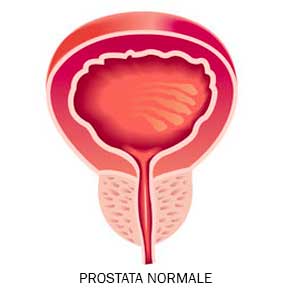Benign Prostatic Hyperplasia (enlarged prostate)
Prostate is a male genital gland situated below the bladder, around the urethra, the tube from which the urine flows out.
The prostate produces a secretion (prostatic fluid) which participates in the formation of the seminal fluid. At birth, the prostate is of the size of an almond.
During puberty, the volume of this gland increases owing to the presence of the male hormones (androgens) acting as the stimulant.
Around the age of 50, among the majority of men, the volume of the prostate continues to increase while squeezing the urethra and thus stems numerous urinary problems.
A common pathology, present in 50% of men over 50 years and 88% of men with more than 80 years.
The irritation in the bladder that follows the failure to discharge provokes disorders very frequently.
- THE MAIN SYMPTOMS ARE:
- Increased frequency of urination
- Weak urinary stream
- Hesitancy while urinating
- Dribbling after urination
- Necessity of efforts while urinating
- Burning sensation
- Painful urination
DIAGNOSING BPH
The medical examination in this case involves performance of a physical abdominal examination, especially in the abdominal rectal area, which gives an idea about the volume of the prostate gland and highlights the presence of suspicious nodules; a questionnaire, called I-PSS, to analyze the severity of the symptoms shall also presented to the patient. After that, it is necessary to prescribe some further investigations, like a urine test with eventual urine culture, PSA measurement (prostate-specific antigen), kidney function tests and a Uroflowmetry (test that measures the speed of the urinary stream during urination, the test is culminated by simply urinating into a special instrument called a flow meter). After that, depending on the clinical and therapeutic needs, a transrectal prostate ultrasound, abdominal ultrasound, urodynamic examination with a pressure-flow relationship curve may also be requested. Among the most common complications of BPH is an increased risk of urinary tract infections due to retention of urine in the bladder. There are two types of treatments: the medical and the surgical. The Medical treatment employs drugs to alleviate the symptoms, such as alpha-blockers. These relax the prostate and bladder’s neck musclese and thus increase the flow of urine flow. Besides the alpha-blockers, the 5-alpha-reductase inhibitors are used. The therapy of association between alpha-blockers and 5α-reductase inhibitors has proven successful in drastically reducing the volume of the prostate. In case of failure of medical treatment a surgical treatment may become necessary. This involves the resection of the portion of the prostate through urethra. It is important not to overlook the first signs of a possible urinary tract disturbance, and if any persistence of symptoms is found, it is appropriate to undergo a medical examination. Ascertaining the cause of the problems at an early stage allows one to take prompt action in order to prevent or at least slow down the progression of the disease into a more serious condition, which could have an impact on the personal and social life of the individual.
BPH is neither cancer, nor an early stage of cancer


